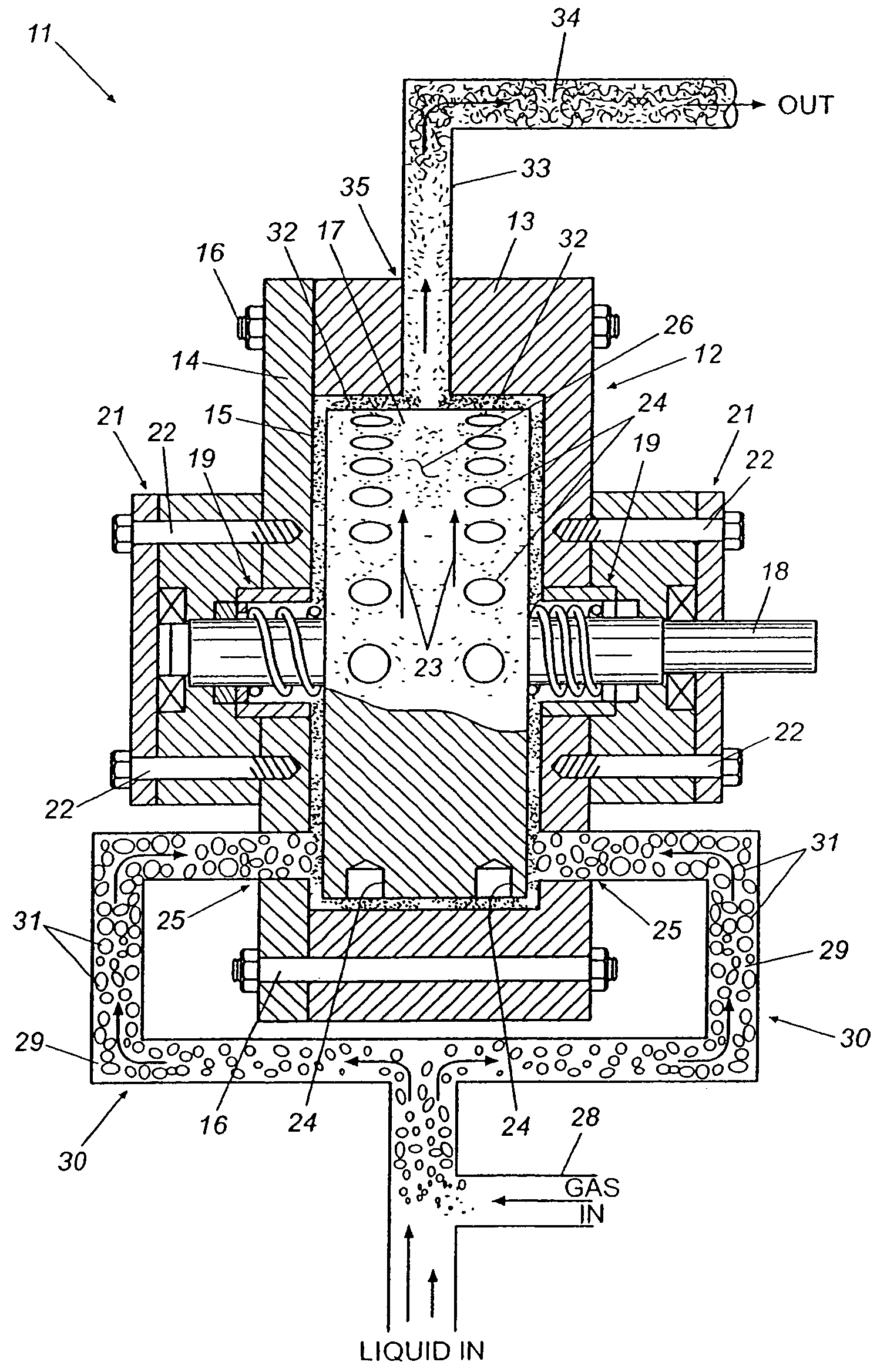Cavitation device with balanced hydrostatic pressure
a hydrostatic pressure and cavitation device technology, applied in the field of mixing, can solve the problems of natural lower limit of the size of the resulting air bubbles, trs compounds are extremely harmful to the environment, and emissions problems, and achieve the effect of high efficiency
- Summary
- Abstract
- Description
- Claims
- Application Information
AI Technical Summary
Benefits of technology
Problems solved by technology
Method used
Image
Examples
Embodiment Construction
[0018]As mentioned above, the methodology of the present invention will be described within the context of its application to the oxidation of environmentally harmful compounds within black liquor in the pulp and paper industry. While this represents a preferred application and a best mode of carrying out the invention, it will be understood that the invention has numerous other applications wherever mixing of dissimilar fluids is required. In this regard, numerous examples of the application of the present invention in other mixing environments will be described following the detailed description of its application to black liquor oxidation.
[0019]Referring now in more detail to the drawings, in which like numerals refer to like parts throughout the several views, FIG. 1 illustrates a preferred embodiment of a hydrosonic mixer for carrying out the present invention. The hydrosonic mixer 11 comprises a cylindrical housing 12 defining an internal cylindrical chamber 15. In the illustr...
PUM
| Property | Measurement | Unit |
|---|---|---|
| concentrations | aaaaa | aaaaa |
| dimension | aaaaa | aaaaa |
| distance | aaaaa | aaaaa |
Abstract
Description
Claims
Application Information
 Login to View More
Login to View More - R&D
- Intellectual Property
- Life Sciences
- Materials
- Tech Scout
- Unparalleled Data Quality
- Higher Quality Content
- 60% Fewer Hallucinations
Browse by: Latest US Patents, China's latest patents, Technical Efficacy Thesaurus, Application Domain, Technology Topic, Popular Technical Reports.
© 2025 PatSnap. All rights reserved.Legal|Privacy policy|Modern Slavery Act Transparency Statement|Sitemap|About US| Contact US: help@patsnap.com



